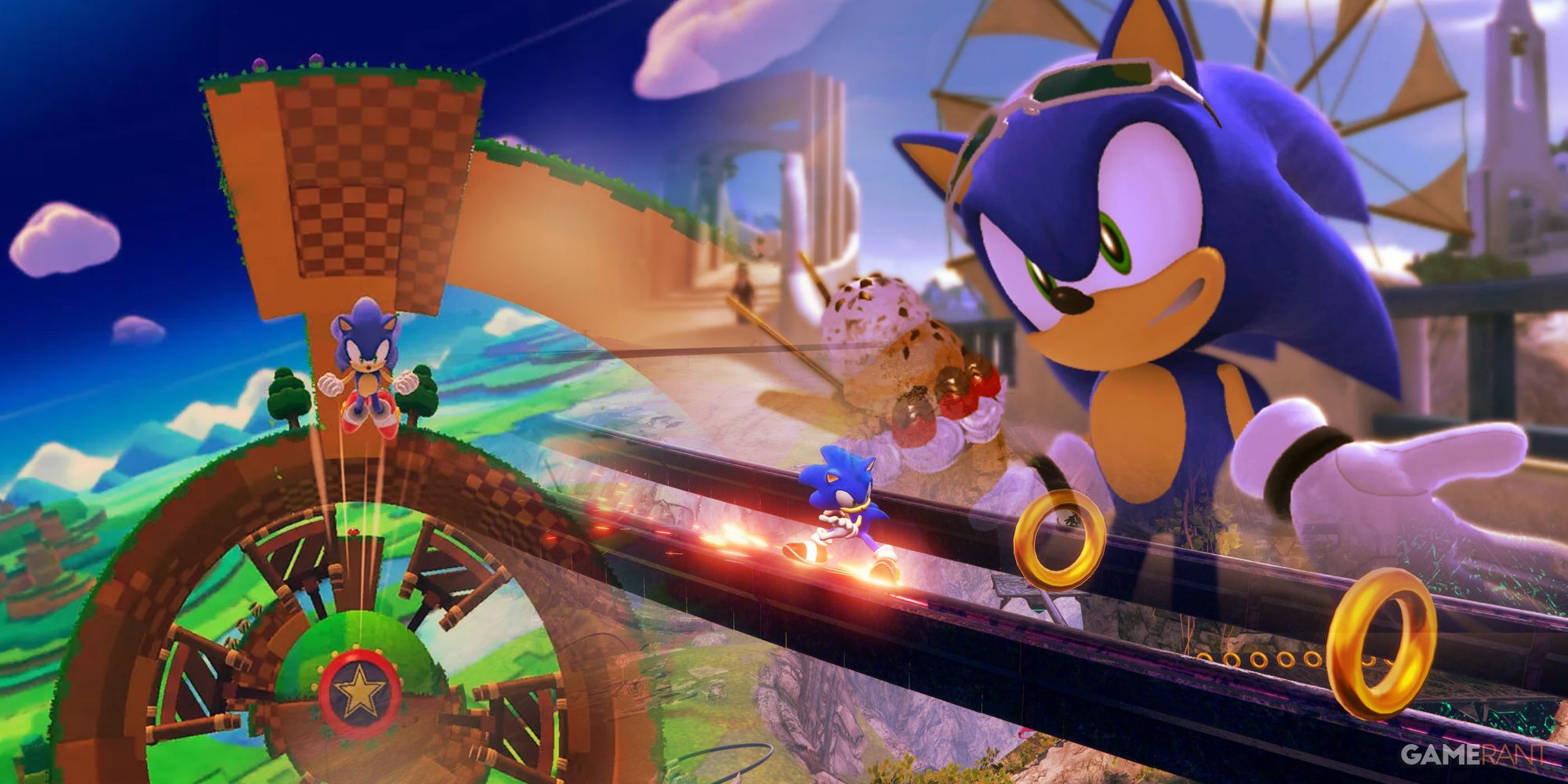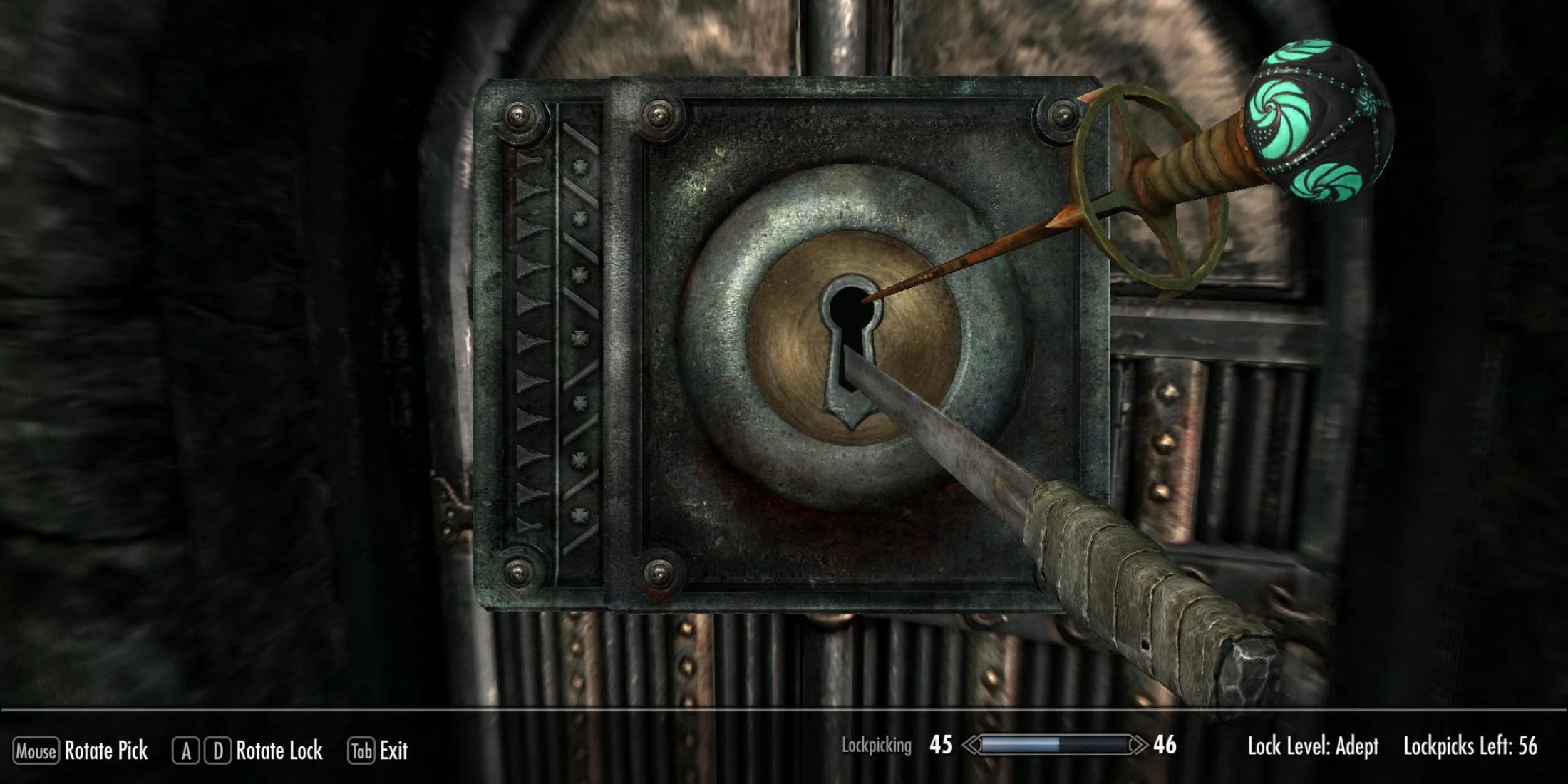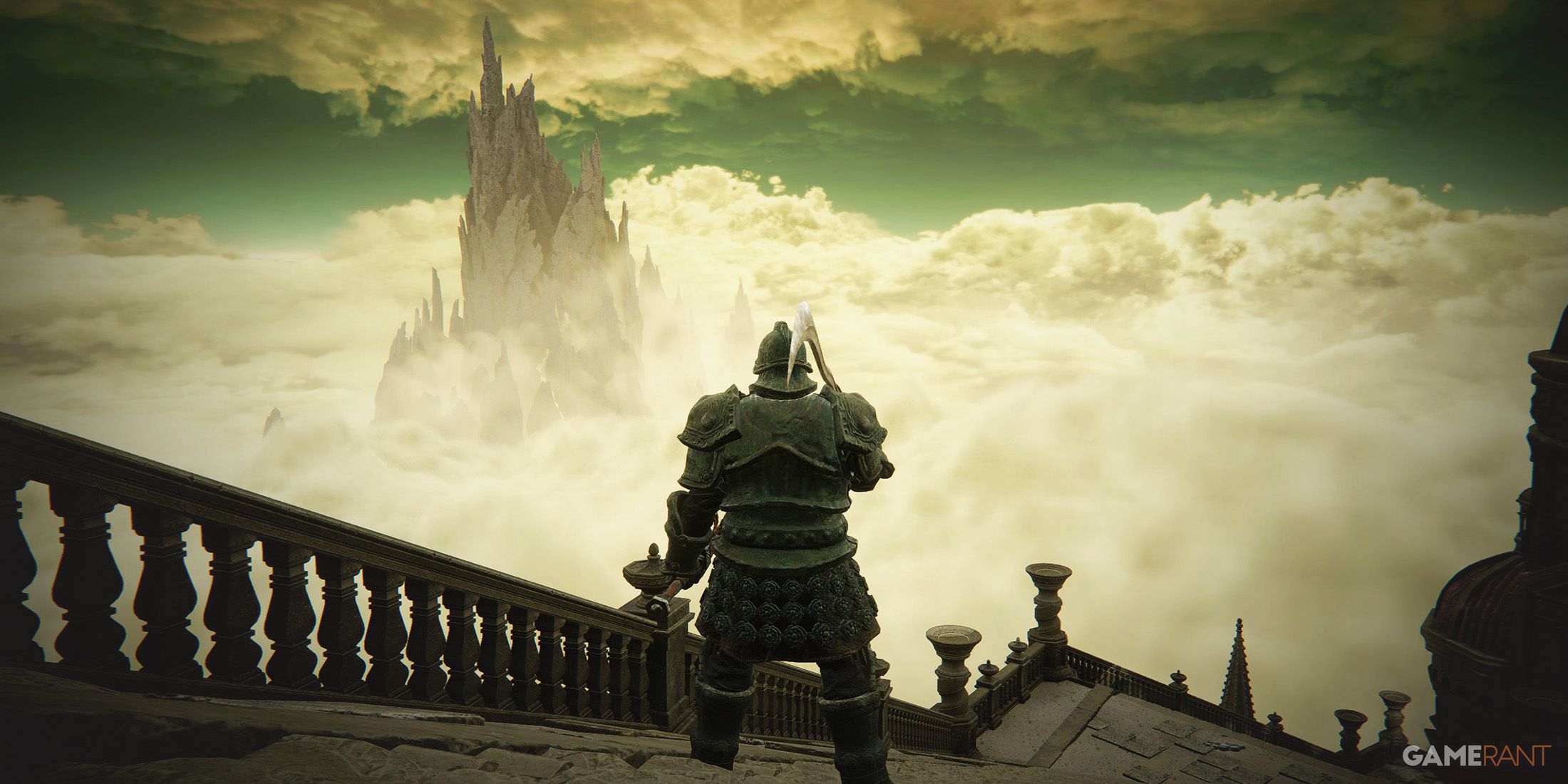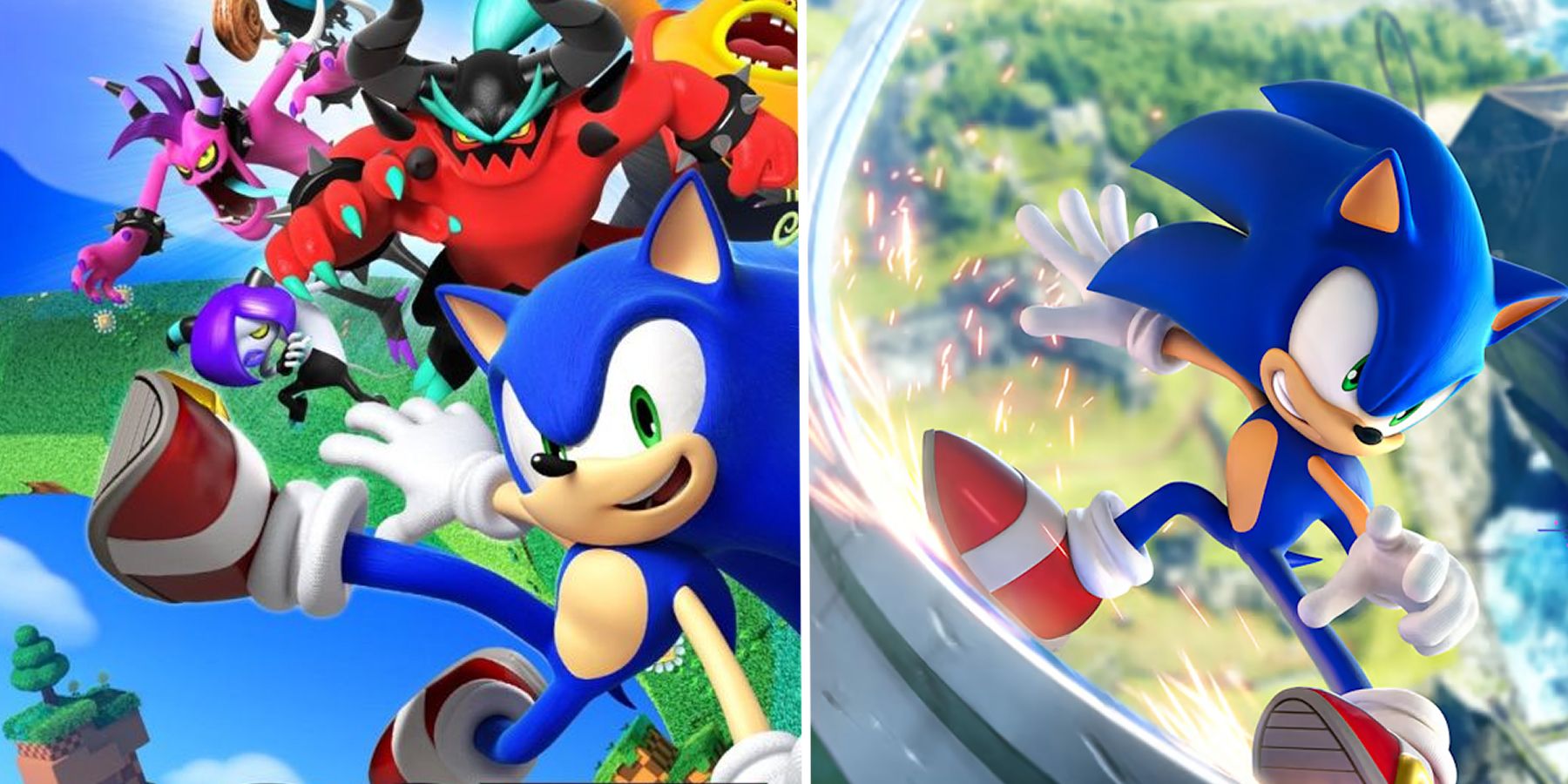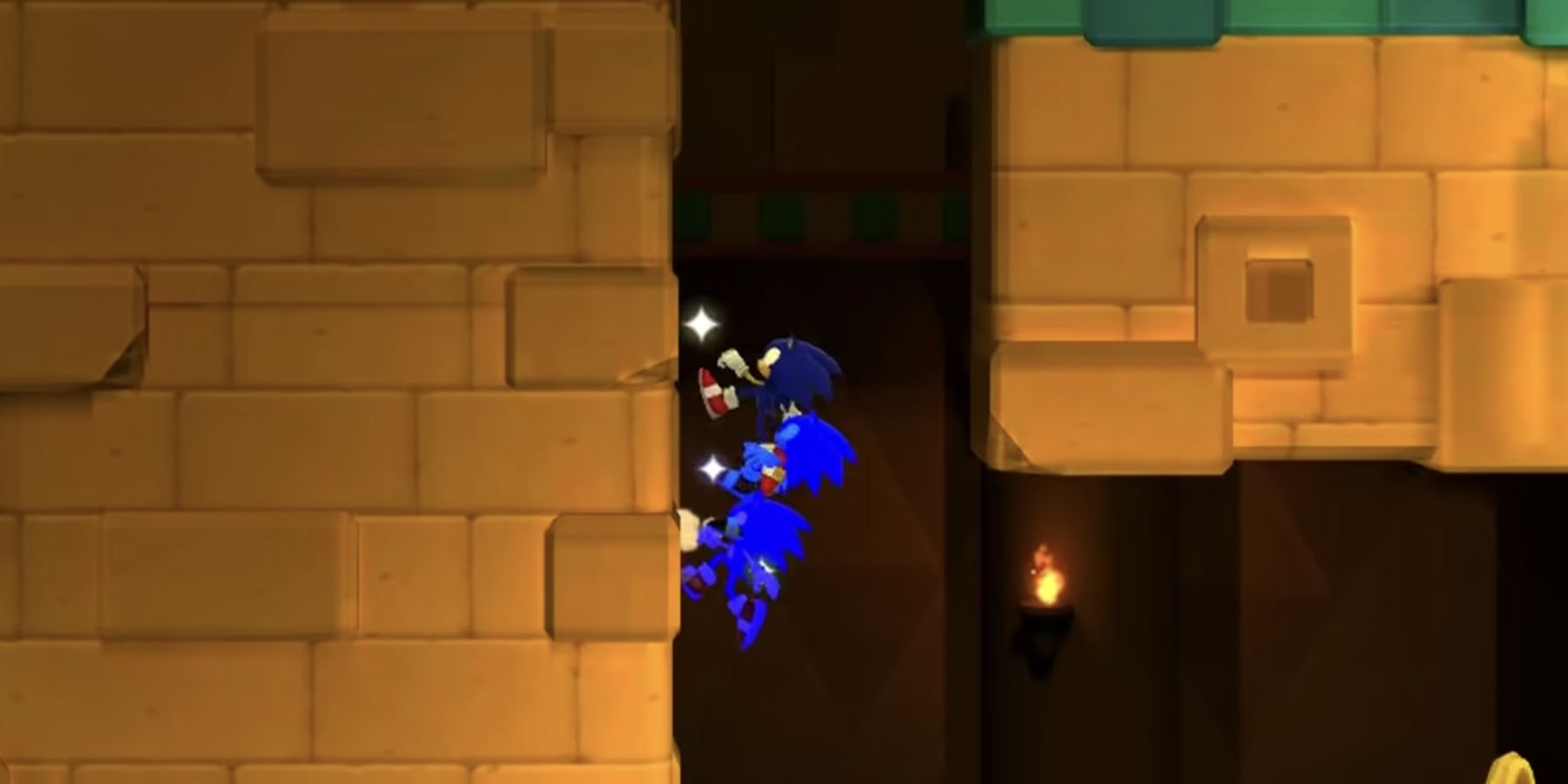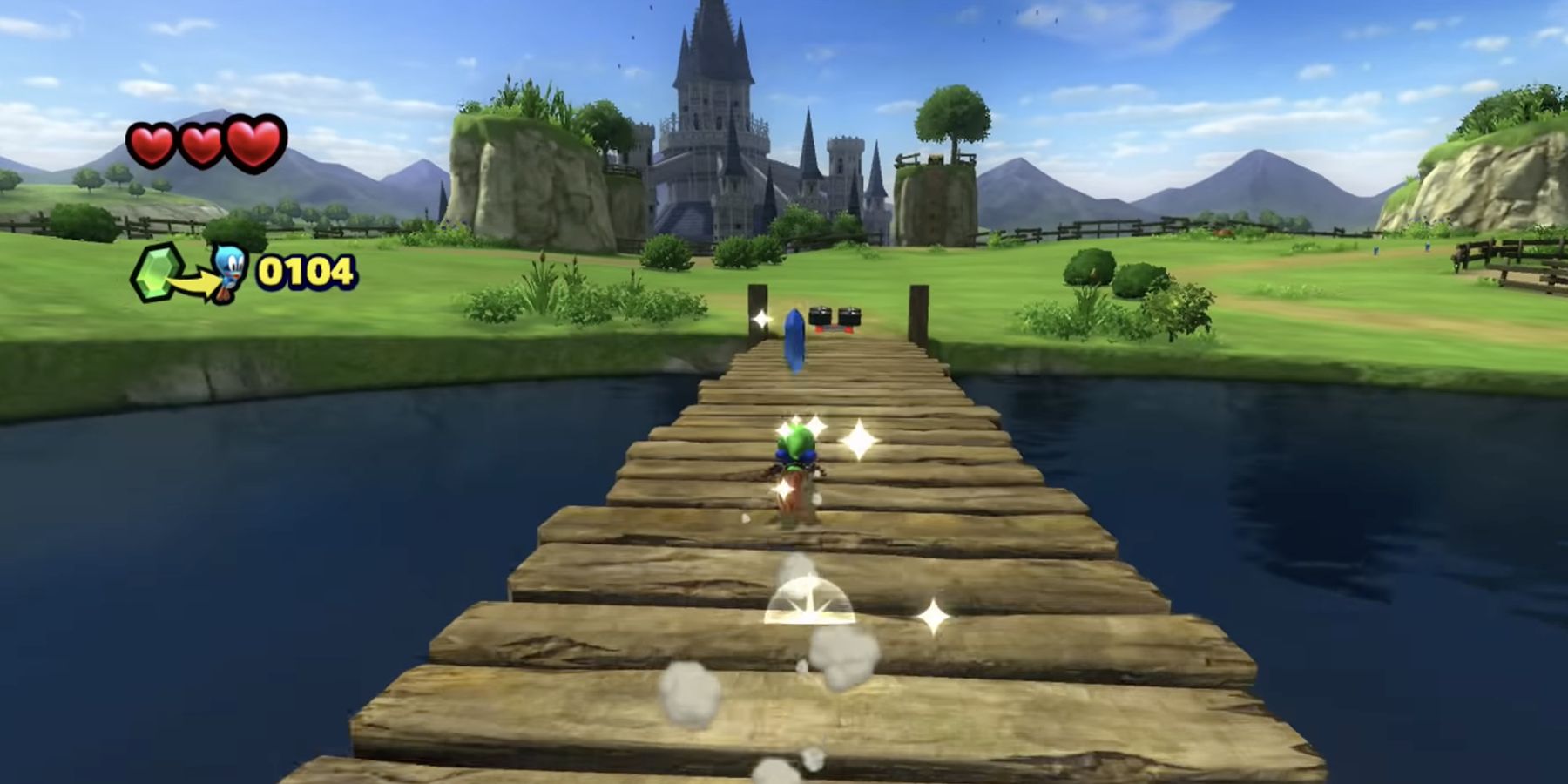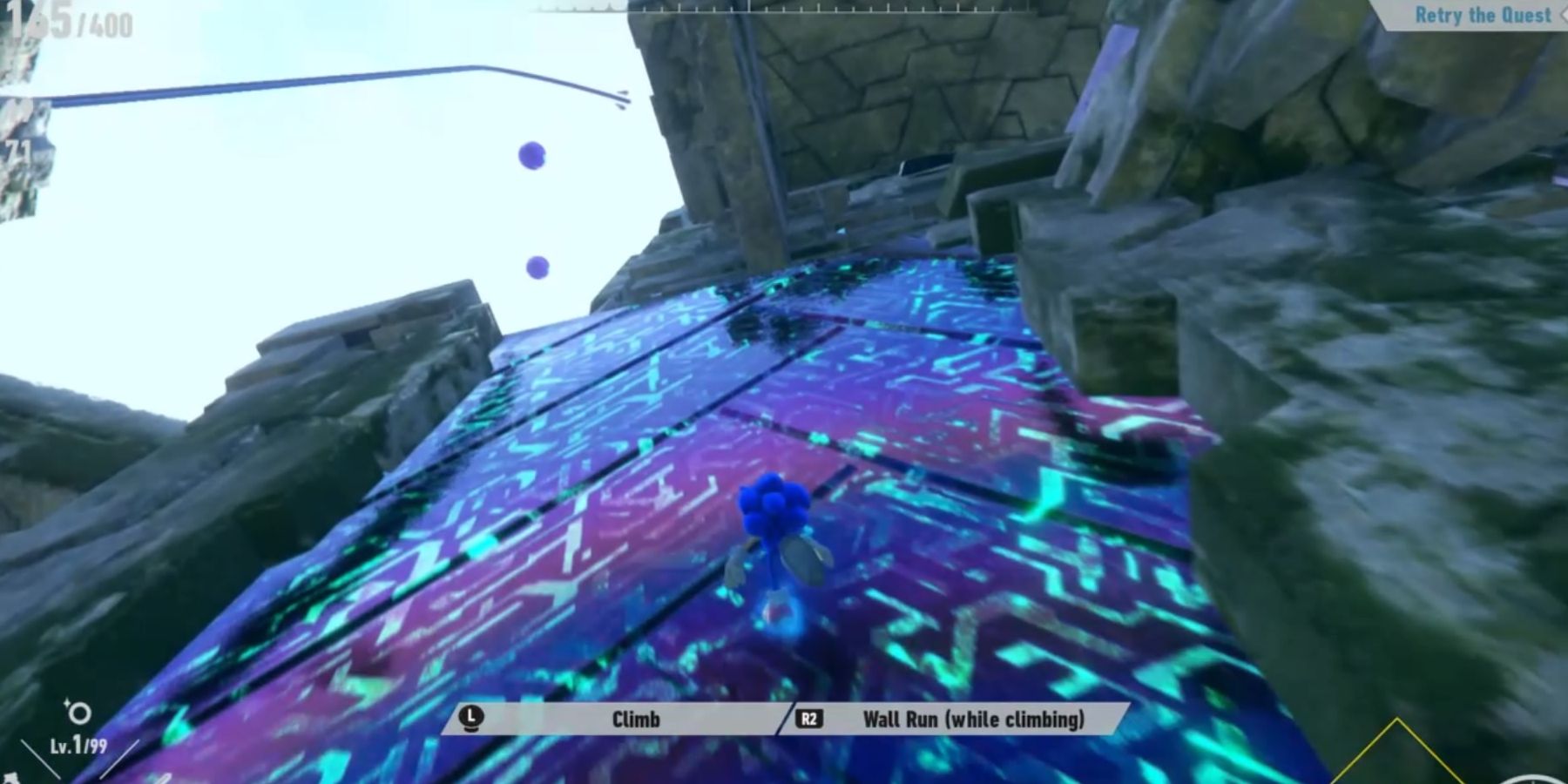There are a number of Sonic the Hedgehog games like Sonic Lost World that played a role in shaping the latest installment of the franchise, Sonic Frontiers. The game tweaks the boost mechanic from Sonic Unleashed and helps it fit in with a more open-zone environment, some of the more 2D platforming sections are ripped straight out of Sonic Colors, and a myriad of other titles either make a cameo appearance as re-used level designs in the Cyber Space stages, or are referenced as part of the game's story.
Through these references, it's clear that Sonic Frontiers was definitely meant to release for the series' 30th Anniversary, as these references are ironically on-par with Sonic Generations'. However, Frontiers was designed to usher in a new era for the blue blur as well as the game serves as the foundation of future titles according to the leader of Sonic Team Takashi Iizuka. One of these games was more influential than the others, though, and it's Sonic Lost World.
Sonic Lost World's Control Scheme
Despite coming out during the height of the "boost" gameplay era for the series, Sonic Lost World slowed things down for the sake of better control over platforming mechanics. Taking very obvious inspiration from Super Mario Galaxy, Sonic Lost World is most known for its unique cylinder-shaped maps. One of the unique things about Lost World was how it sought to change how the titular character controlled. It changed the normal method of controlling Sonic with the control stick and sometimes a boost button, and instead used a run trigger to help players control their top speed.
Aside from adding the ability to make Sonic go at his top speed with just the press of a button, Sonic Team also used the run trigger as a way for the game to know when the player wanted to run across and climb on walls. This changed the dynamic of how Sonic worked with his environment in a way that practically re-defined what could be possible in a Sonic game. However, Lost World was criticized as being too slow, even with the parkour mechanic turning each level into a place where non-linear exploration was encouraged. Any path was the right path.
Sonic Lost World's The Legend of Zelda Zone
Despite Lost World's low standing with some fans, however, there was one stage in the game that was considered to be the best of them all, even by those who didn't enjoy the base game very much. This was the special Legend of Zelda Zone DLC. While it was only one act, this stage did away with Lost World's cylindrical shape at the start and instead allowed Sonic to run around a big open flat field to solve Zelda-esque puzzles. One in specific even asked players to use the parkour function to get Rupees off a wall.
Many fans who disliked the base game made it very clear that they would have preferred the main game be similar to the first part of the Legend of Zelda DLC. If one looks at the one-shot level now, it certainly feels like the players who voiced their desires got their wish. Frontiers plays rather similarly to the way that the downloadable stage did. Of course, some adjustments to the formula were made in the years since.
How Sonic Frontiers Improved Sonic Lost World's Controls
Although a similar running mechanic was kept between Sonic Lost World and Sonic Frontiers, instead of a boost button, fans now use the shoulder buttons on their controller as a new run trigger. The boost mechanic has also been adjusted to match, not only in terms of how long the gauge remains filled, but also in the sense that the boost will run out before the gauge. This makes sure it remains as a controlled burst of speed to avoid players careening off of ledges. Using the new boost run trigger, fans can run along certain cliff sides with time to spare.
Frontiers understandably had to limit the scope of what could be done with such a high top speed against the surfaces in the game, but wall climbing makes its return against certain ancient glowing panels. Ironically, it's almost ripped out of the similarly-named Lost World action stage from Sonic Adventure. However, in order to make it less frustrating, the parkour works in three ways. With no momentum, Sonic will climb up the wall with his hands. One press of the run trigger makes it that Sonic will casually run up the wall, and two presses activates the boost gauge.
This certainly helps players try to avoid careening off the edge, even when mistakenly pressing the wrong button. It also helps add to numerous parts of the game's level designs. The irony of the two Lost Worlds goes far beyond the name, as well, as the lore reveals in Sonic Frontiers almost seem to go hand-in-hand with this similarity, as the game recontextualizes what fans know about the ancient echidna tribes.
There's an argument to be made, though, that while it's great that Frontiers offers so many options of attack and exploration of the Starfall Islands, that the sheer number of options may be too much. Each button does something unique in this game, and some Sonic fans may spend a fair deal of time with the game having to adjust to the jump and homing attack being two different buttons among other things. However, this amount of control is great for future open-zone Sonic games, which Frontiers has been said to be the foundation of.
Sonic Frontiers is out now for PC, PS4, PS5, Switch, Xbox One, and Xbox Series X/S.

